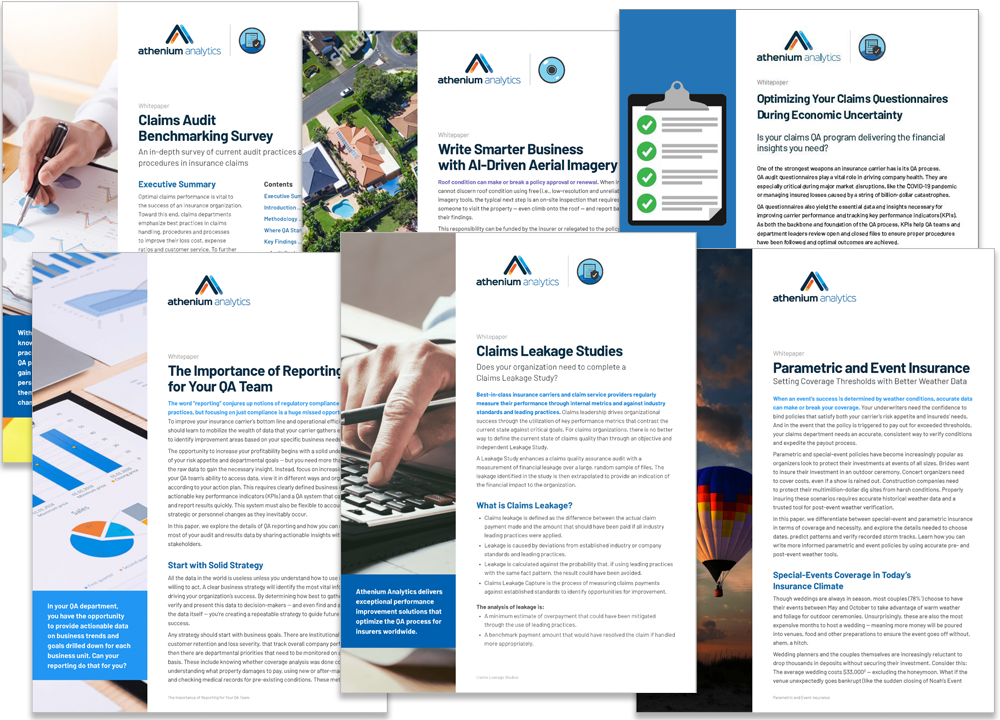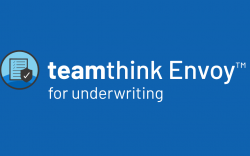The insurance industry is being transformed by artificial intelligence. Carriers employing AI are seeing improvements in managing risk, increasing operational efficiency and automating quality assurance. Building AI in-house comes with unique challenges that can make vendor AI solutions look very attractive. In this article, discover the key factors to consider when deciding whether to build vs. buy an AI solution for your organization.
Strategy considerations
The build vs buy decision is ultimately about strategy. If the problem you’re trying to solve isn’t core to what you do and doesn’t contribute to your competitive advantage, you should immediately search for a vendor.
This is one reason why the Gauge risk analytics suite from Athenium Analytics is so popular. It leverages massive weather data sets to score natural hazard risks. It’s popular because gathering, analyzing and modeling meteorological data is a core competency of Athenium Analytics, but not insurance carriers.
Prerequisites for building AI programs
In order to build an AI solution, your organization needs several prerequisites in place. If you don’t already have these, the cost and timeline of building your solution will balloon. Consider searching for a vendor if you find yourself in this situation:
- Lacking leadership buy-in – Do you have an executive sponsor who can help secure resources to build a new department and keep the org happy for the 1 year+ it will take to deliver?
- Missing a data infrastructure – Data engineers are needed to make your data accessible to data scientists in a secure, scalable and cost-effective manner.
- Insufficient data science talent – Building a data science team from scratch is a long, winding and expensive road. I’ve done it before, and you should expect to spend 6-12 months just on recruiting and structuring the team.
Expect to spend at least a year meeting all these prerequisites.
Timeline for building
Let’s assume you have all the prerequisites in place. You’ve got a team, some data and all the resources you need. How long will it take to build your AI solution?
Data science projects are different from traditional software development because they require experimentation. Discovering a solution (that is, building a sufficiently accurate model) might take a few weeks, if you’re lucky. But most likely, it will take many months. Your team may be able to deliver earlier with a simple, less accurate model or with a partial solution (solving a narrower version of the problem). In any case, deploying the model to production and integrating into your systems will take many more months. You should expect 6-12 months for the team to build a model, deploy it into production, and integrate with your systems.
Opportunity cost of building
There are also opportunity costs of building instead of buying. Every dollar your organization spends on, say, hiring scientists and engineers to build an AI system for extracting information from claims documents, is a dollar not spent on core operations like underwriting, claims handling and marketing.
Reasons to buy
Let’s summarize all the challenges with building AI for insurance that make buying from a vendor so attractive.
- Many applications of AI in the insurance industry solve problems that are not core to what insurance carriers do. Here are some examples:
- Weather analytics to score natural hazard risks.
- Computer vision to extract risk characteristics of building structures from geospatial imagery.
- Natural language processing to extract information from unstructured claims files, identify missing information and create alerts that reduce costly errors.
- Building features in-house could take as long as two years before you realize any value to the business.
- You can be up and running in weeks with a turn-key insurance QA solution like teamthink Envoy.
- The direct costs of hiring scientists and engineers, along with the indirect costs of delaying other company priorities, can be staggering.
- In contrast, when a vendor develops a product like Claims Signal, development costs are shared across many customers, allowing that vendor to pass on savings to you.
For many insurance carriers, buying AI and predictive analytics solutions from an insurtech vendor like Athenium Analytics lowers costs, shortens the time to value, and lets your organization focus on its core mission.
Discover how Athenium Analytics is collaborating with Aon on an AI-driven solution for improving open claims quality and outcomes. Learn more about Claims Signal now.
Want to explore options for developing a new insurance-based AI solution? Contact us to learn how Athenium Analytics can help.
About the author
 Jared Rand is a Senior NLP Data Scientist at Athenium specializing in natural language processing. His work on Claims Signal enables unstructured claims notes to be understood by our predictive models and alert engine. He also has an MBA and experience as an entrepreneur. He is an active blogger in the data science community, with articles in Towards Data Science and other publications. View Jared on LinkedIn.
Jared Rand is a Senior NLP Data Scientist at Athenium specializing in natural language processing. His work on Claims Signal enables unstructured claims notes to be understood by our predictive models and alert engine. He also has an MBA and experience as an entrepreneur. He is an active blogger in the data science community, with articles in Towards Data Science and other publications. View Jared on LinkedIn.





